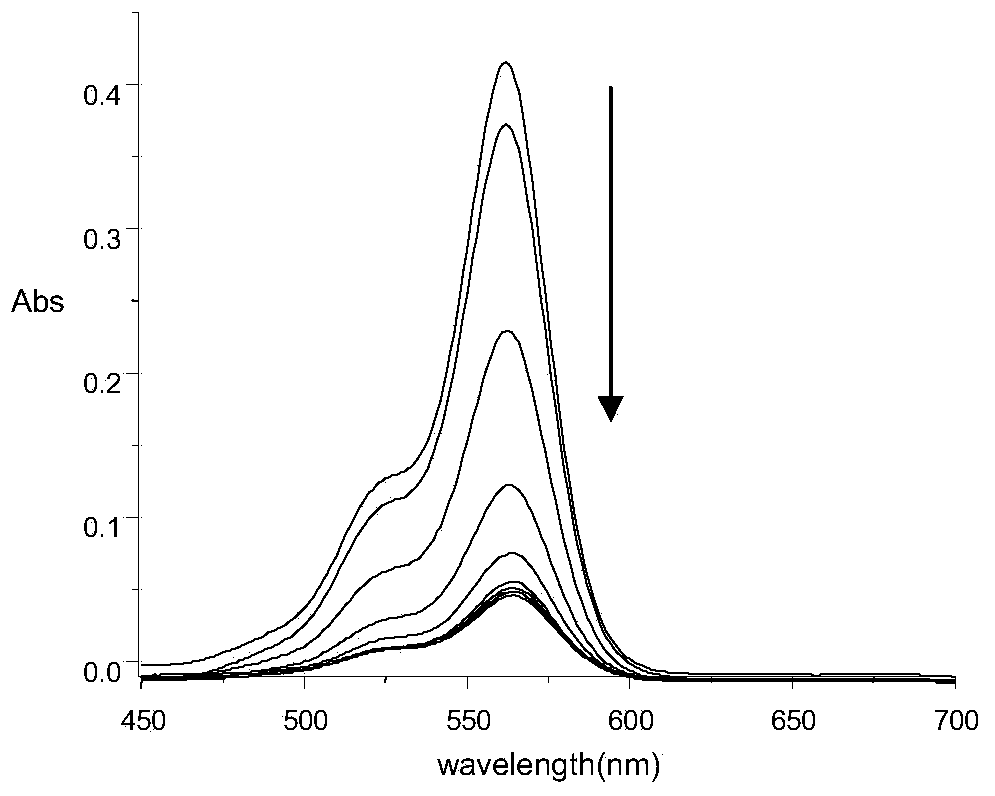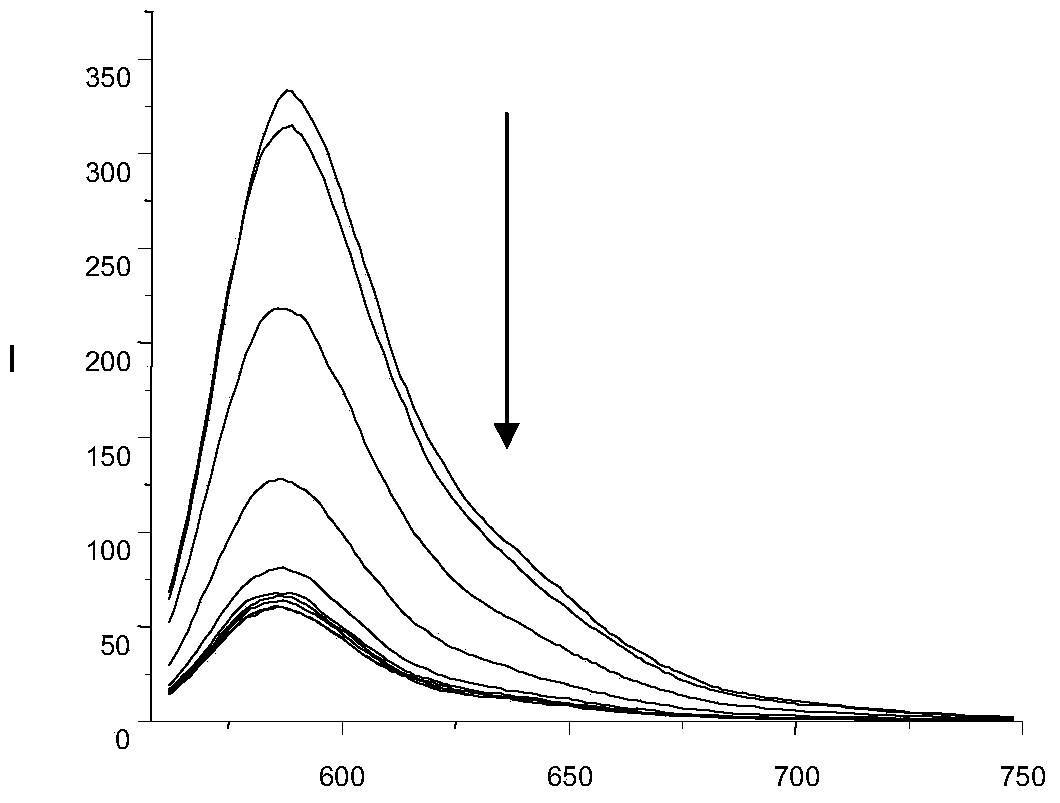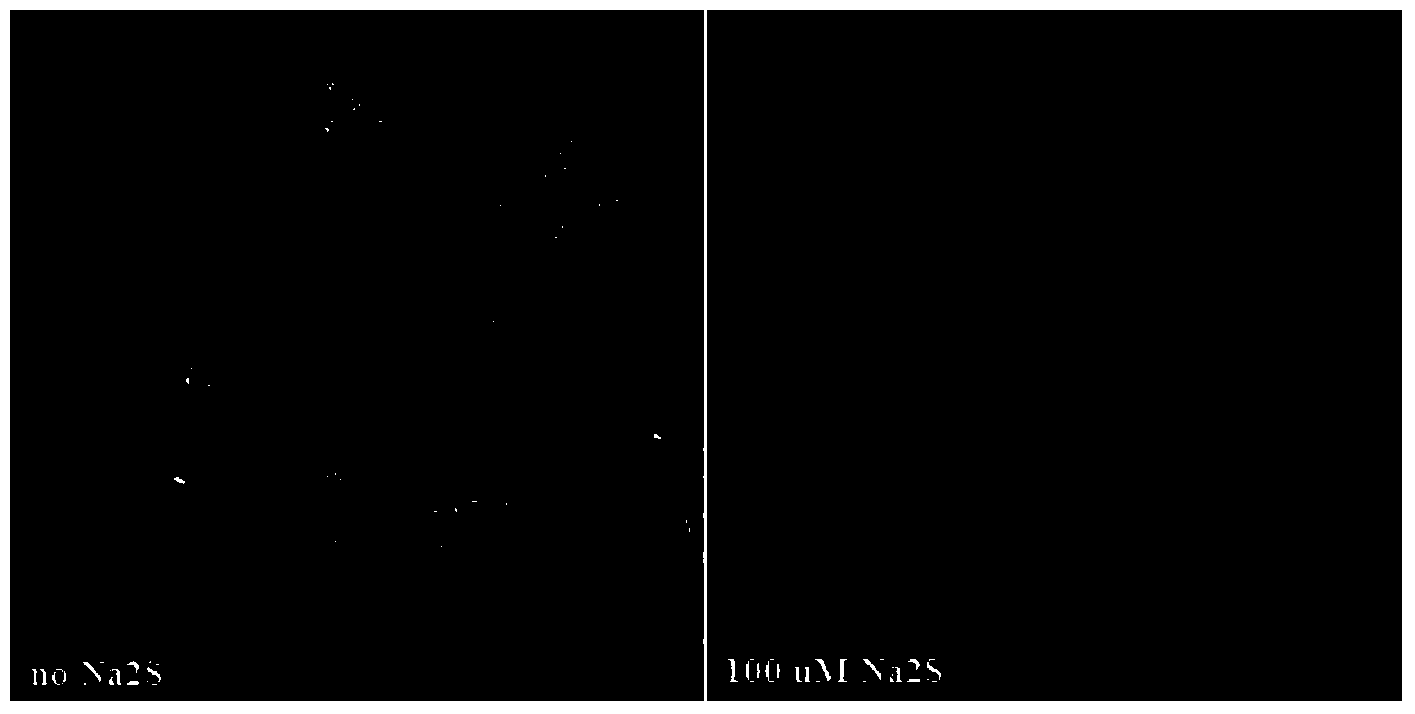Fluorescent probe for detecting sulfur ions in mitochondria and application thereof
A technology of fluorescent probes and sulfide ions, applied in the field of fluorescent probes, can solve problems such as the inability to detect sulfide ions and the lack of mitochondrial positioning functions, and achieve good solubility and biocompatibility, good chemical stability, and good cell communication. The effect of permeability
- Summary
- Abstract
- Description
- Claims
- Application Information
AI Technical Summary
Problems solved by technology
Method used
Image
Examples
Embodiment 1R
[0023] Embodiment 1RhS-1 fluorescent probe
[0024]
[0025] 300mmol rhodamine 123 and 900mmol phosphorus oxychloride POCl 3 Add it to 120 mL of dry 1,2-dichloroethane, heat to reflux for 4 hours, and remove the solvent under reduced pressure. Add 50 mL of dry acetone and 300 mmol of sodium azide aqueous solution (mass concentration: 5%), and react at 0° C. for 24 hours. The reaction solution was extracted with dichloromethane, the lower layer was removed, dried over anhydrous magnesium sulfate, and purified by silica gel column chromatography (200-300 mesh) to obtain a bright black product RhS-1 with a yield of 33%, MS: 355.1022.
Embodiment 2
[0026] Embodiment 2RhS-2 fluorescent probe
[0027]
[0028] Mix 300mmol of rhodamine 6G with 900mmol of phosphorus oxychloride POCl 3 Add it to 120 mL of dry 1,2-dichloroethane, heat to reflux for 4 hours, and remove the solvent under reduced pressure. Add 50 mL of dry acetone and 300 mmol of sodium azide aqueous solution (mass concentration: 5%), and react at 0° C. for 24 hours. The reaction solution was extracted with dichloromethane, the lower layer was removed, dried over anhydrous magnesium sulfate, separated and purified by silica gel (200-300 mesh) column chromatography to obtain bright black RhS-2 with a yield of 34%, MS: 439.1789.
Embodiment 3
[0029] Embodiment 3RhS-3 fluorescent probe
[0030]
[0031] 300mmol of tetramethylrhodamine and 900mmol of phosphorus oxychloride POCl 3 Add it to 120 mL of dry 1,2-dichloroethane, heat to reflux for 4 hours, and remove the solvent under reduced pressure. Add 50 mL of dry acetone and 300 mmol of sodium azide aqueous solution (mass concentration: 5%), and react at 0° C. for 24 hours. The reaction solution was extracted with dichloromethane, the lower layer was removed, dried over anhydrous magnesium sulfate, separated and purified by silica gel (200-300 mesh) column chromatography to obtain bright black RhS-3 with a yield of 51%, MS: 412.1543.
PUM
 Login to View More
Login to View More Abstract
Description
Claims
Application Information
 Login to View More
Login to View More - R&D
- Intellectual Property
- Life Sciences
- Materials
- Tech Scout
- Unparalleled Data Quality
- Higher Quality Content
- 60% Fewer Hallucinations
Browse by: Latest US Patents, China's latest patents, Technical Efficacy Thesaurus, Application Domain, Technology Topic, Popular Technical Reports.
© 2025 PatSnap. All rights reserved.Legal|Privacy policy|Modern Slavery Act Transparency Statement|Sitemap|About US| Contact US: help@patsnap.com



